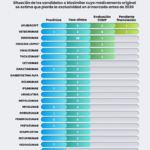The technique of producing monoclonal antibodies, of which we have heard so much in recent months, was developed mainly in the 1970s and 1980s and led to the awarding of the Nobel Prize in Medicine and Physiology to Köhler, Milstein and Jerne in 1984.
The therapeutic application of monoclonal antibodies was later and currently they have become a very important class of biotechnological medicine due to their therapeutic efficacy in many conditions such as cancer, rheumatoid arthritis, asthma, multiple sclerosis and other serious diseases of a generally chronic nature.
The monoclonal antibodies They are recombinant proteins. They are, therefore, very complex compounds with a very high molecular mass produced by genetically manipulated cells. They act by selectively identifying a target (called an antigen) that they neutralize and/or destroy. In the case of the multiple sclerosis for example, antibodies have been developed that intercept and block TNF, a factor that contributes to joint inflammation.
As for any other biological medicine, in order to develop a biosimilar version of an already existing therapeutic monoclonal antibody, the structural/molecular characteristics of the original reference product must be reproduced with maximum fidelity, and it must be demonstrated that in effect both products share the biological activity and the efficacy and safety profile.
In the case of highly complex drugs, the studies that will be required to demonstrate equivalence may be qualitatively and quantitatively more extensive than in the case of less complex biologics.
To achieve these goals, there is a set of highly sensitive analytical techniques, and biological systems and process engineering that allow the optimization of the manufacturing process and, subsequently, the determination of the comparability between the final biosimilar monoclonal antibody and the reference product.
Experience and current knowledge of the European Medicines Agency (EMA), which has established itself as a pioneer in biosimilar regulation, for a strong scientific assessment relies on experience gained from reviews of many original monoclonal antibody products. In it biosimilar development of monoclonal antibodies, the general guidelines for biosimilars and specific guidelines for monoclonal antibodies apply.
La European Commission has licensed a single monoclonal antibody biosimilar so far. Notably, a biosimilar of a fusion protein was recently licensed. Although technically it is not an antibody, due to its mechanism of action and its structural and functional complexity, it is assumed as such for the purposes of its development. For this reason, it meets the EMA requirements for monoclonals.




